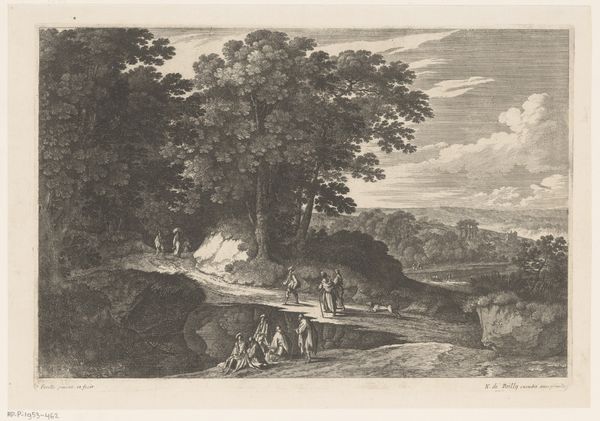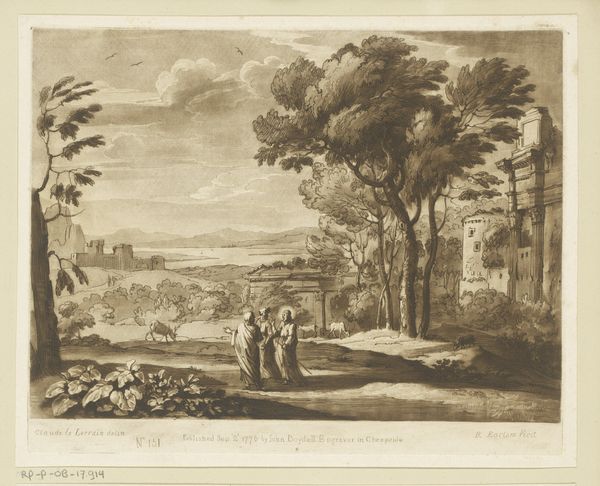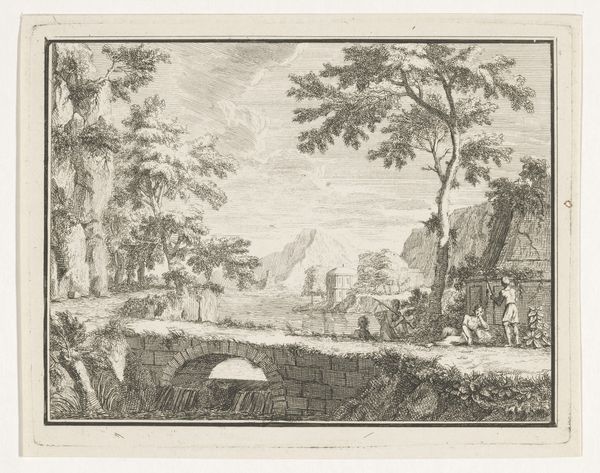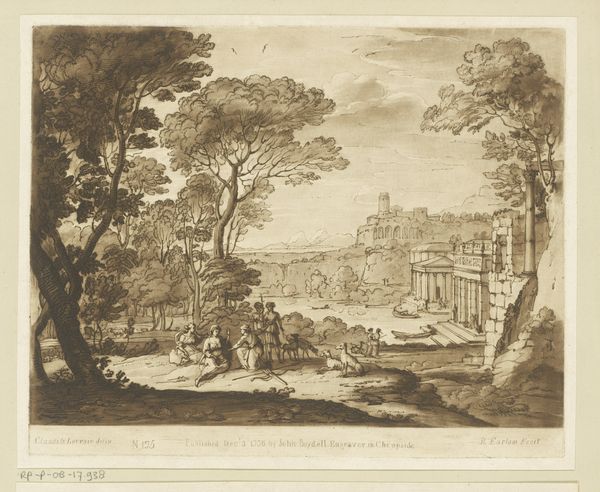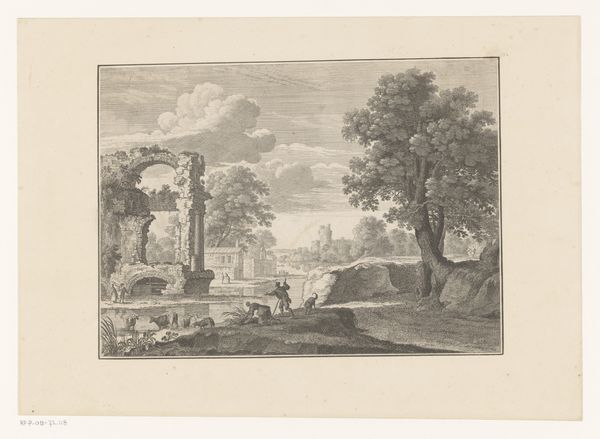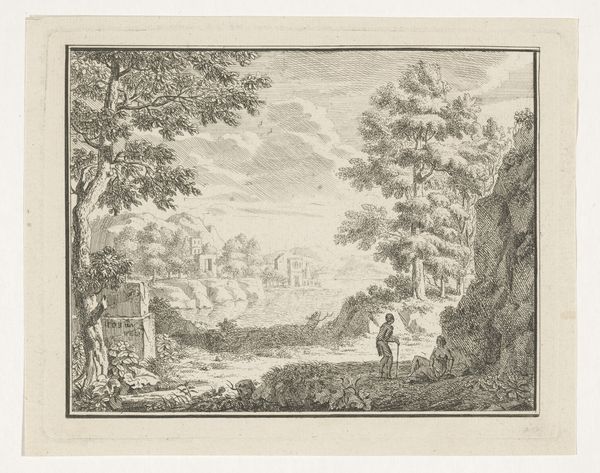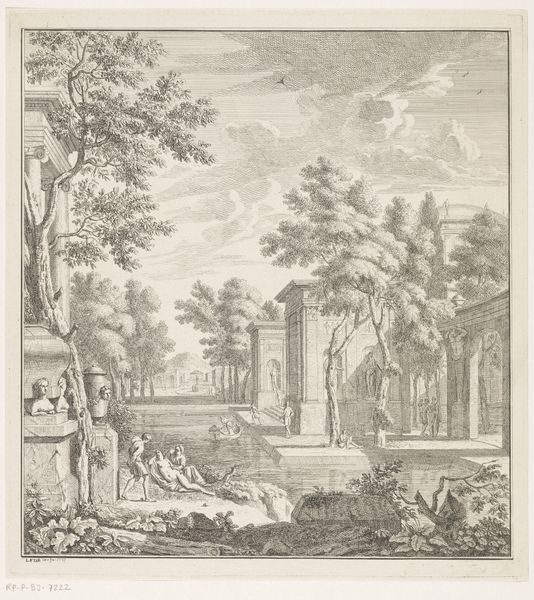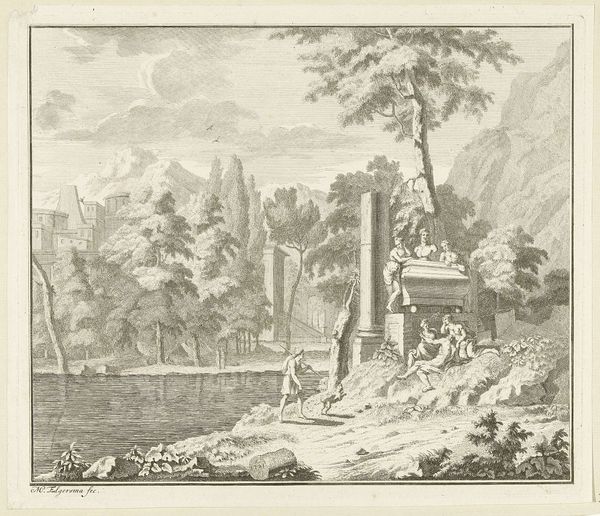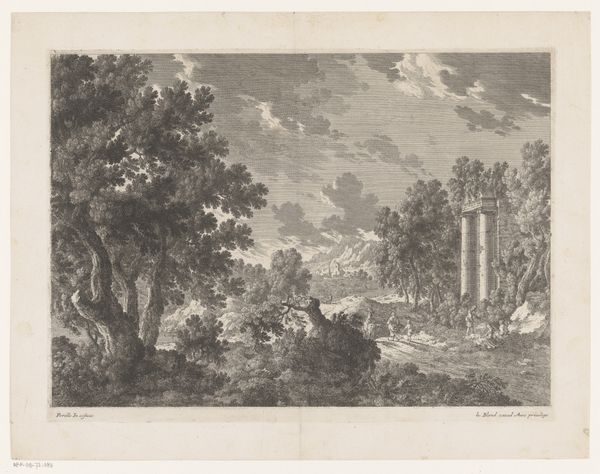
print, engraving
#
baroque
# print
#
landscape
#
academic-art
#
engraving
Dimensions: height 262 mm, width 314 mm
Copyright: Rijks Museum: Open Domain
Curator: I’m drawn to the overall composition. The grouping of figures in the left foreground leading toward the landscape—it all has such a pleasing and rather old-fashioned sensibility. Editor: Indeed. This engraving is entitled *The Sacrifice to Diana*, and it dates back to 1721, crafted by Louis Fabritius Dubourg. The artwork aligns itself with Baroque sensibilities while invoking that era's penchant for academic landscapes. Curator: Sacrifice… but where is the altar? I don’t get the overt symbolism I usually expect, but I still see so many layers, the women bringing what look like harvested goods and other things like game, but everyone looks so relaxed and unburdened by obligation, if you understand what I mean. Editor: Absolutely. While "sacrifice" holds weight, recall that the act wasn’t solely about somber obligation, especially within aristocratic and artistic circles. It was enmeshed in display, celebration, and reinforcing social structure. Notice the architecture within the image; it frames and elevates the narrative and how class literally looks down on the landscape. Curator: That perspective definitely puts it into focus! The landscape is not merely decorative. These kinds of idealized views were meant to affirm a specific type of control and societal narrative. And those trees almost look like something's guarding the composition, wouldn't you agree? They frame everything happening to the right. It's hard to escape how staged it looks! Editor: You have hit the nerve, that 'stagey' feeling, if I might. Prints like this weren't just pretty things; they were often tools, designed to propagate a specific lifestyle or ideology. Consider this piece in the broader landscape of its time – what sort of messages were being amplified or diminished, especially about women, nature, and ritualistic gatherings? Curator: Now, there is definitely an undercurrent that runs deep, with rituals becoming symbols and stories over generations. If a single image like this can resonate over centuries and speak volumes about shifting interpretations and power dynamics—the collective memory contained feels vast. Editor: Precisely. Next time someone casually dismisses a landscape print, remind them it is speaking about society’s relationship with power. Looking deeper at the history really shapes my view and helps us connect even with those from long ago!
Comments
No comments
Be the first to comment and join the conversation on the ultimate creative platform.
